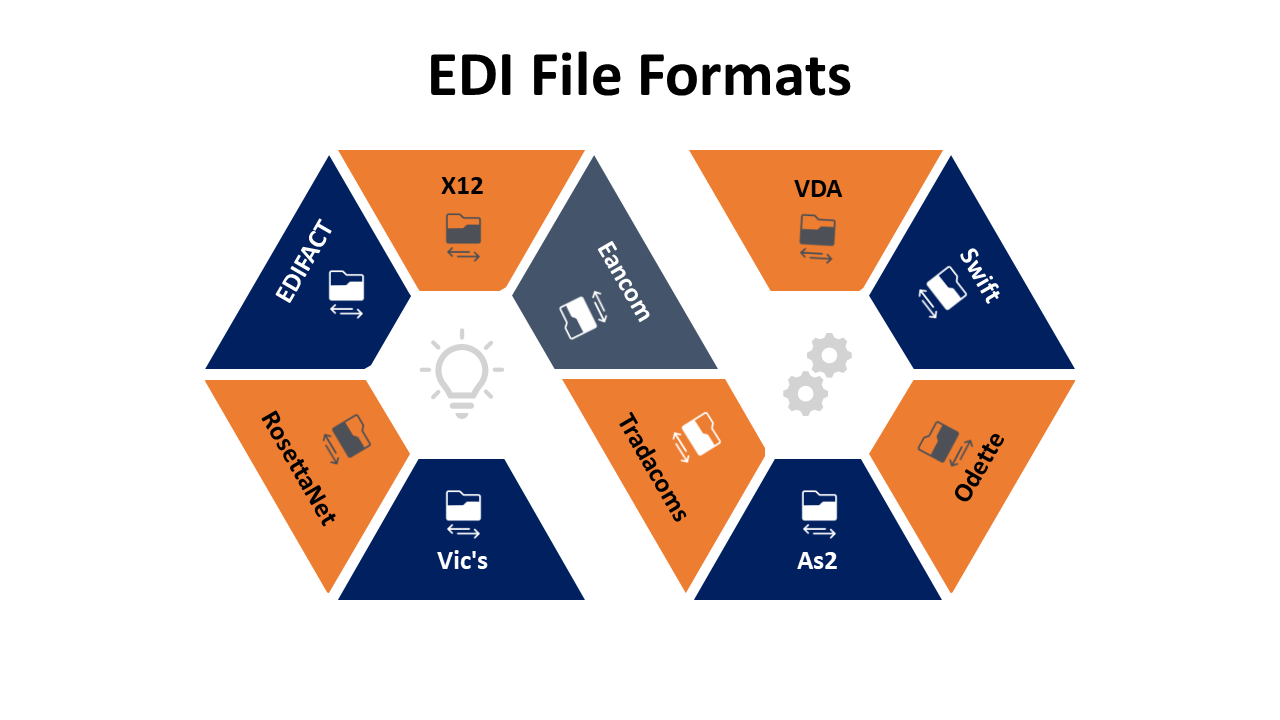Table of Contents
There is a rapid increase in the use of computers and electronic communication. Due to this EDI has become a mainstay component in the conduct of business operations of many firms. The automation that EDI software providers use allows for the electronic exchange of common documents, including orders, invoices, shipping notices, and payments between businesses and their trading partners. Effective EDI integration services will help companies realize significant benefits through the reduction of manual work, acceleration of transactions, improvement of supply chain visibility, and inventory management. The market for Electronic Data Interchange (EDI) software was estimated to be worth USD 1.78 billion in 2022 and is expected to expand at a compound annual growth rate (CAGR) of 12.5% from USD 1.98 billion in 2023 to USD 4.52 billion by 2030.
However, implementing EDI and managing EDI operations effectively can be challenging. Having data mapping, integration, monitoring, and change management in place are all critical to ensuring EDI truly supports smooth business operations. As per Small Business Advisor: “Managed EDI services can provide a cost-effective way to access expert EDI support, especially for businesses with lower EDI transaction volumes.”
What is Electronic Data Interchange (EDI)?
EDI is a structured data communication mode that businesses use to convey information from one business to another. Standards and protocols in this very discipline enable businesses and other organizations to electronically transmit and receive business documents between one another: purchase orders, invoices, shipping notices, payments, etc. EDI integration reduces manual re-entry of data and minimizes the errors associated with human data entry.
Formats
EDI uses standard data formats so that businesses with different computer systems can communicate and process transactions automatically. Basic data formats define document types like invoices and purchase orders. Business partners must agree on the type of data for each document and the specific formats and codes they will use.
Electronic data interchange providers significantly decrease the amount of manual data entry and re-keying required between business partners. It eliminates errors caused by manual data transcription, speeds up transaction processing, and reduces paperwork and physical document handling. EDI integration solutions enable automated ordering, payment processing, and inventory management.
While services from a top EDI provider offer many benefits, setting up the required technology, translation software and connectivity can be an expensive and complex project. Most companies implement EDI for transactions with major customers and suppliers who require it.

Role of EDI in supporting business operations
EDI is a key component in many businesses. EDI services enable companies to exchange common documents. These include purchase orders, invoices, shipping notices, and payment files, with their trading partners. It automates procedures and diminishes manual work, reducing errors and speeding up transaction times.
Procurement:
For procurement, EDI implementation services enable automated ordering. When a business needs to reorder products, an EDI purchase order can be generated automatically and sent electronically to the supplier. The supplier’s EDI system can then generate picking lists to fulfill the order efficiently. Moreover, invoices and shipping notices are also sent electronically. This reduces the cycle time for ordering, fulfilling orders, and processing invoices.
Logistics
For logistics, EDI shipping notices alert businesses of incoming shipments, helping them better plan and manage warehouse operations and inventory. Advance shipment notices speed up customs clearance. For accounts payable and receivable, EDI payments and remittance pieces of advice can be automatically matched to electronic invoices, speeding up the payment process. Funds can be transferred electronically.
Production
EDI solutions also support inventory and production management. Electronic purchase orders trigger inventory replenishment. Electronic sales orders from business customers initiate production runs. EDI inventory status requests from suppliers can trigger replenishment orders.
Key Features of an Efficient EDI Support System
A business will not achieve much without an efficient Electronic Data Interchange support system to help in running EDI. Key features include:
- Easy interface with internal systems:
An EDI service should be able to easily interface with a business’s core applications. This includes ERP, WMS, TMS, and financial systems. The EDI support specialists have to allow smooth data flow in and out of the internal systems on account of order processing, inventory management, and invoicing.
- Reliable translation ability:
It should be able to translate data between the standard EDI formats and those used within the business with complete accuracy. It has to handle the multiplicity of document types used by different trading partners. At this stage, data mapping and error checking ensure accuracy.
- Secure network connectivity:
The system enables secure EDI connectivity via the internet, VPN, or a private network. It manages digital certificates, encryption, and authentication that protect the sending and receiving of any sensitive data.
- Compliance with EDI standards:
The EDI services conform to the industry standard EDI formats of documents like EDIFACT, ANSI X12, and TRADACOMS. It can evolve based on new releases from these standards.
- Flexible Configuration:
Within this system, flexible configuration of trading partners and EDI document types is possible. Custom rules in data mapping, error handling, and routing of documents can be built according to the needs of each partner.
- In-depth Monitoring and Reporting:
The system gives complete transparency into the EDI process. Generation of alerts in case of problems, tracing document flows, and producing reports on metrics such as document volumes, processing times, and errors—this is how performance could be tracked and areas for improvement identified.
- Automated message routing:
The incoming EDI documents are smartly routed to the right internal system or department as defined by the predefined rules. Similarly, on the other hand, outgoing documents will be forwarded to the right trading partners.
- Centralized administration:
There is a single point for administering Users, Trading Partners, EDI connections, and System Configuration. All administration tasks could at any time be assigned to different roles.
All these features combined help businesses derive reliability, efficiency, and end-to-end EDI operation visibility. With the assistance of top EDI providers, the value realized from EDI is not only about ridding a business of manual tasks; it’s within the optimization of information flows that empower the daily running of business processes.
EDI and the Simplification of Supply Chain Management
EDI is an integral constituent of the modern-day supply chain management system. It facilitates the easy and effective exchange of all operational documents that a firm needs to exchange with top EDI providers and customers. This automatically arranges the information flow, which subsequently optimizes it throughout the supply chain.
Procurement
EDI integration services enable suppliers to rapidly as well as accurately take purchase orders from businesses. Suppliers can be able to automate order-picking and then generate advance shipping notices which will be the trigger of inventory replenishment. It cuts ordering cycle times and from stock situations.
Logistics planning
Advance shipping notices which are given by suppliers through EDI provide a clear view of inbound shipments. From this, there is preplanning of the warehouse activities and trucking requirements to maximize how inventory is handled.
Order Fulfillment
EDI sales order documents sent to distributors and retailers trigger delivery schedules from distribution centers. Electronic shipment status updates from EDI solution providers keep customers informed.
Inventory Management
EDI inventory inquiry requests can be sent automatically to suppliers when stock levels reach reorder points. Suppliers respond with inventory availability information that helps fine-tune reorder decisions.
Payments
EDI invoices received from suppliers can be automatically matched to purchase orders as well as receiving records. Electronic transfer of funds to suppliers for speeding up cash flow.
EDI services provide a speedier automated exchange of supply chain event information between a business and its trading partners. Orders, shipments, invoices, inventory inquiries, and other documents course electronically in near real-time. This kind of information visibility and connectivity along the supply chain network helps drive improvements in performance metrics. Order fulfillment times come down, while inventory levels are minimized and turns accelerated. Deliveries to customers are more timely, with payment cycles faster as well.
Enhancing Efficiency in Procurement Processes with EDI
Traditional paper-based procurement is slow, error-prone, and inefficient. In these key procurement processes, huge enhancements in efficiency can be attained by implementing Electronic Data Interchange or EDI.
Purchase order management
EDI can create purchase orders electronically and send them to their suppliers. This completely avoids manual typing of the order and its subsequent faxing. Orders are received immediately, which is in a format that their systems can automatically process. This results in the reduction of errors and time taken in processing orders.
Invoice Processing
Suppliers can submit EDI invoices referring to the original purchase order. The invoice information is then matched, automatically with what was ordered, streamlining approval. Electronic invoices developed with the help of outsourcing top EDI providers can be routed directly to accounting systems for faster payment. Thus, there is no need for manual data entry.
Receiver and payment
The EDI delivery notes notify the buyer that an order has been dispatched. By simply matching them to the EDI delivery note, one can receive goods into internal systems. All manual paperwork processing is eliminated. EDI service providers can automatically release payments once goods are verified.
Returns Management
EDI return authorizations can be created and sent to suppliers electronically, quickening the process. EDI returns receipts provide confirmation and real-time visibility.
All these processes benefit from the automated, paperless exchange of standardized data enabled by the EDI communication protocol. By eliminating manual, error-prone tasks businesses can achieve significant time and cost savings. Procurement cycles are shortened as a result, leading to improved efficiency. Additionally, the improved accuracy and data visibility help optimize operations with the help of EDI service providers in the USA.
Improving Customer Relationship Management with EDI
EDI or electronic data interchange helps businesses improve customer relationship management in several ways:
- Faster order processing – Customers can place orders electronically which are automatically received by the business’s systems. An Electronic Data Interchange Consultant speeds up order fulfillment and reduces errors.
- Better order tracking – Customers can track order status in real-time through EDI updates. They have more visibility into where their orders and shipments are in the fulfillment process.
- Electronic invoice presentation – Customers receive invoices electronically through EDI and can integrate them directly into their accounting software. This removes manual tasks and speeds up payment.
- Automatic dispute resolution – EDI enables the electronic exchange of sales reports, credits, and debit memos to resolve billing issues quickly, reducing phone calls and emails.
- Improved delivery times – EDI ship notices and advanced shipping notifications allow customers to better plan for receiving deliveries. This helps optimize their operations and workflows.
- Reduced excess inventory – EDI empowers customers to transmit production schedules and replenishment requirements automatically. Businesses can maintain optimal but not excessive inventory levels for their customers.
- Faster responses – EDI communication protocol manual data entry and re-keying and also automates routine tasks. As a result, customer service staff can focus on more complex issues that improve the customer experience.
- Integration – EDI fully integrates businesses with major customers’ IT systems for purchasing, logistics, and accounting. EDI consulting services can help data flow seamlessly between both sides.
EDI streamlines common interactions between businesses and customers. Automating routine processes through EDI means fewer errors, faster responses, and improved visibility. Customer satisfaction increases as EDI helps businesses become more responsive, reliable suppliers. Over time, EDI experts enable closer collaboration and a more strategic customer relationship.
Ensuring Compliance and Regulatory Requirements
Businesses utilize EDI to meet customers’ requirements, government agencies, and industry regulations compelling businesses to use electronic transactions. EDI offers a solution by which standardized data can be exchanged precisely and on time among partners. It supports compliance in several ways:
- Customers –
Most of the major companies insist their vendors send orders, invoices, and other forms of business documents through the medium of EDI. Hence, these vendors have to integrate EDI services into their business framework to preserve their relations with these customers.
- Government –
Governments generally require tax filings, customs clearance, and several other types of information to be submitted online. An electronic data interchange provider facilitates the business house in sending standardized documents on time and with appropriate specifications.
- Industry –
EDI requirements regulate a few industries. This could be the healthcare providers who need to send the claims electronically to the insurance companies. EDI provides for the transfer of data in the correct format.
- Regulations –
Several regulations, like Sarbanes-Oxley, require that businesses maintain an accurate electronic record of all financial transactions. Top EDI providers help in this compliance by capturing each transaction automatically in standardized, easily audited formats.
- Security-
The EDI systems provide secure electronic data transfer by applying data encryption, digital certificates, and authentication of users. In this line, it will satisfy the regulatory requirements relating to data protection.
- Accuracy:
On accuracy, EDI applies pre-defined data formats and validation checks. Translation software reduces errors due to data entry. In this line, error detection and correction are automatic for compliant documents.
- Monitoring—
EDI services that report events, keep a record of all transactions, provide exception alerts, and enhance visibility into electronic transaction flows for fast identification and correction of any compliance issues.
EDI security helps in compliance and regulatory requirements by automating the accurate, secure electronic exchange of standardized business documents.
This EDI system produces data in formats mandated by external parties. Also incorporates needed security, validation, and monitoring features.
Get professional EDI support at A3Logics
Choosing the Right EDI Solution
When choosing an Electronic Data Interchange or EDI solution, businesses should consider several factors:
- Cost – What are the upfront and ongoing costs? Does the solution charge per document, per user, or have a flat monthly fee? Cheaper options may lack features from EDI service providers in the USA.
- Features – What EDI standards are supported? Can documents be configured? How t do they carry out data mapping and validation? What reporting is available? More features from electronic data interchange providers enable greater efficiency.
- Scalability – Can the solution grow as business needs grow? Does it support increasing document volumes and new trading partners easily? Look for flexible, cloud-based options.
- Connectivity – How do partners connect – via the internet, VPN, or a value-added network? What security features are available? Consider ease of setup and management.
- Complexity – Is the solution easy to configure and use? Does it require extensive IT resources or specialized EDI knowledge? Many cloud EDI solutions are simple to deploy.
- Support – What user and technical support is available? How responsive is the vendor? Look for 24/7 support for timely assistance while selecting EDI solution providers.
- Integration – How easily can the solution integrate with internal systems? Consider APIs, data mapping tools, and pre-built connectors. Easy integration is key.
- Reliability – What is the vendor’s reputation for uptime, security, and customer satisfaction? Check reviews from unbiased sources.
Choose a solution that best balances cost, features, scale, and ease of use for your organization’s current and future EDI needs. A user-friendly system from EDI service providers in the USA that can reliably support your business processes and growth goals is ideal.
Implementing an Efficient EDI System
To implement an efficient Electronic Data Interchange (EDI) system, businesses should focus on the following:
Integrate with internal systems – Ensure proper integration of the EDI solutions with key systems like ERP, WMS, ordering, and billing platforms. In addition, test mappings, data flow, and compatibility.
Configure data formats and documents – Work with each trading partner to determine the specific EDI formats and document types. Once identified, configure the system accordingly.
Test with trading partners – Conduct testing for each EDI document type with important customers and suppliers with the help of EDI software solutions. Test file transfers, data mappings, error handling and resolve any issues before going live.
Provide end-user training – Train staff who will use the EDI system on features, workflows, and how it impacts their daily tasks. Ensure they understand any changes to current processes.
Establish policies and procedures – Develop clear policies for EDI system usage, file naming, error handling, and dispute resolution. Document new procedures for relevant EDI support teams.
Monitor performance metrics – The Electronic Data Interchange Consultant can help you track key metrics like document volumes, error rates, uptime, and processing times. Identify areas for improvement.
Review regularly – Maintain an ongoing process to identify ways to optimize EDI operations. For example, consider new features, standards, and capabilities from your solution provider.
Communicate with business partners – Keep trading partners informed of any EDI system or process changes. Work together to resolve issues and improve the exchange of data.
Strong change management and communication throughout the organization and with partners are critical to the successful deployment of efficient EDI security. Begin with the end in mind – the goals for your EDI operations and the expected benefits. Then, execute a thorough implementation process to achieve those goals.
Trust Us for Handling Your EDI. Hire Our Support Specialists
Overcoming Common Challenges in EDI Implementation
Here are some common challenges in EDI implementation:
High setup costs – EDI with the help of electronic data interchange companies requires investment in new technology, software, and system integration. Start with major business partners to justify costs. Phase in EDI for other partners over time.
Complex data mapping – Mapping internal data to EDI formats and vice versa can be difficult. It is advisable to invest in good translation software and spend time testing and refining data mappings.
Resistance to change – Staff may resist learning new EDI systems and processes. Provide training, communicate benefits clearly, and involve employees in the implementation. Change management is key.
Security and reliability concerns – Ensure the EDI security has strong security features and a track record of reliability. Conduct thorough testing before going live to identify issues.
Long implementation times – EDI projects can take months due to complex configurations, testing, and internal changes required. Plan the timelines carefully and break the implementation into phases which ultimately leads to smooth processes.
Partner incompatibility – Not all partners may support the same EDI standards. First, start with compatible partners and request that others adopt your EDI formats over time.
Difficult dispute resolution – Electronic transactions limit human interaction for clarifying issues. Define clear policies and processes for handling EDI document disputes upfront.
Lack of visibility – Businesses lose the ability to “see” paper documents with EDI. Focus reporting and monitoring with the help of electronic data interchange companies on key performance metrics to maintain visibility.
Slow adoption – Staff may be slow to embrace the many benefits of EDI. Therefore, be patient, communicate the value, and lead by example to encourage wider usage with the help of EDI software providers.
Conclusion
Implementing an efficient and reliable EDI security can truly transform how your business operates by streamlining communications and data exchange with partners. With the right EDI implementation solutions, policies, and change management, you can effectively gain visibility, cost savings, and operational efficiency through automated electronic transaction processing. When implemented well, EDI paves the way for smoother business operations and a more collaborative, data-driven supply chain.
FAQs






